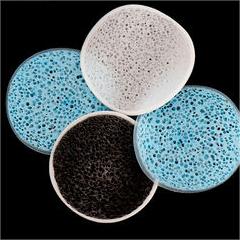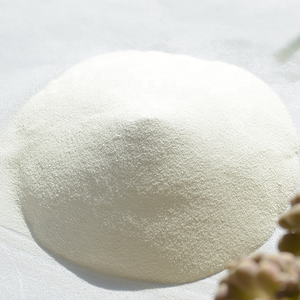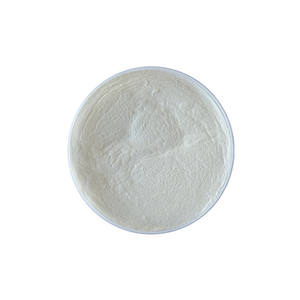Overview of Linear Alkyl Benzene Sulfonate Sulfonic Acid Anionic Surfactant
Anionic surfactants are a class of surface-active agents characterized by a negatively charged hydrophilic head group when dissolved in water. This charge arises from the presence of a sulfate, sulfonate, phosphate, or carboxylate group. They are among the most widely used surfactants due to their effective cleaning properties, foaming capacity, and broad compatibility with other formulation ingredients. Anionic surfactants find extensive application across industries, including personal care, household cleaning, textiles, and industrial processes.
Features of Linear Alkyl Benzene Sulfonate Sulfonic Acid Anionic Surfactant
-
Negative Charge: The anionic head group imparts water solubility and enables interaction with positively charged surfaces or particles.
-
Detergency: Exceptional at removing dirt, grease, and oils due to their strong polarity and ability to penetrate and disrupt these substances.
-
Foaming Properties: Many anionic surfactants generate stable and abundant foam, making them ideal for applications where lather is desired.
-
Cost-Effectiveness: They are often less expensive than nonionic, cationic, or amphoteric surfactants due to the abundance of raw materials and established production processes.
-
Compatibility: Can be combined with other surfactants to enhance performance or adjust properties, although care must be taken to avoid precipitation or incompatibility issues.
-
Environmental Considerations: Some anionic surfactants may pose environmental concerns due to their persistence or toxicity; however, biodegradable options are available.

(Linear Alkyl Benzene Sulfonate Sulfonic Acid Anionic Surfactant)
Specification of Linear Alkyl Benzene Sulfonate Sulfonic Acid Anionic Surfactant
Linear Alkyl Benzene Sulfonate Sulfonic Acid, known as LABSA, is a key anionic surfactant. This material is very important for making cleaning products. LABSA typically appears as a thick liquid. Its color can range from light yellow to brown. LABSA usually has a distinct odor. The material is soluble in water. This makes it easy to mix into formulations.
The active matter content in LABSA is critical. This value often falls between 96% and 98%. Active matter is the part that actually cleans. Higher active matter means a stronger surfactant. You need less product to achieve cleaning power. The acid value is another vital specification. This number indicates the amount of free acid present. Standard acid values are usually around 180 to 190 mg KOH/g. Controlling acidity ensures consistent performance.
LABSA has a specific gravity around 1.05 at 20°C. Its viscosity is generally low. The liquid flows easily, like water. This property simplifies handling and pumping. The product is stable under normal storage conditions. Keep it in a cool, dry place. Use suitable containers like plastic or stainless steel.
Its main use is producing detergents. LABSA reacts with alkalis like caustic soda. This reaction creates Linear Alkyl Benzene Sulfonate salts. These salts are the active ingredients in many household cleaners. You find them in laundry powders, liquids, and dishwashing liquids. LABSA provides excellent foaming and grease removal. It works well in both hard and soft water. This versatility makes LABSA essential for formulators. Its effectiveness and cost drive widespread use globally.

(Linear Alkyl Benzene Sulfonate Sulfonic Acid Anionic Surfactant)
Applications of Linear Alkyl Benzene Sulfonate Sulfonic Acid Anionic Surfactant
Linear Alkyl Benzene Sulfonate Sulfonic Acid, known as LAS, is a key anionic surfactant. It cleans effectively and is widely used in many industries. LAS breaks down naturally in the environment. This makes it a common choice for eco-friendly products.
Household cleaners rely heavily on LAS. It is in laundry detergents and dishwashing liquids. LAS removes grease and stains from fabrics and dishes. Hard water does not weaken its cleaning power much. Many liquid soaps and all-purpose cleaners also contain LAS. It creates rich foam and lifts dirt easily.
Personal care products use LAS too. Shampoos and shower gels include it for lathering and cleansing. Body washes and hand soaps benefit from its degreasing action. Manufacturers balance LAS levels to avoid skin dryness. Bubble baths and facial cleansers often have LAS for consistent performance.
Industrial applications are significant. Textile factories use LAS to process fabrics. It helps in scouring, dyeing, and finishing cloth. LAS acts as an emulsifier in metal cleaners and degreasers. It handles tough oil and grime in machinery maintenance. Agricultural sprays use LAS as a wetting agent. It spreads pesticides evenly on plant surfaces.
LAS serves in emulsion polymerization for plastics and rubbers. It stabilizes the mixtures during production. Paper manufacturing employs LAS to control residues and improve pulp processing. Car wash solutions and institutional cleaners depend on its cost efficiency. Oil recovery operations use LAS to reduce surface tension in wells.
The petrochemical sector values LAS for fuel additives and lubricants. It prevents sludge buildup in engines. Construction materials like concrete additives sometimes include LAS. It aids in air entrainment and workability. Water treatment plants utilize LAS to disperse contaminants. Its versatility across sectors comes from reliable performance and affordability.
Company Profile
SurfactantChina is a trusted global chemical material supplier & manufacturer with over 12-year-experience in providing super high-quality surfactant and relative products.
The company has a professional technical department and Quality Supervision Department, a well-equipped laboratory, and equipped with advanced testing equipment and after-sales customer service center.
If you are looking for high-quality surfactant and relative products, please feel free to contact us or click on the needed products to send an inquiry.
Payment Methods
L/C, T/T, Western Union, Paypal, Credit Card etc.
Shipment
It could be shipped by sea, by air, or by reveal ASAP as soon as repayment receipt.
5 FAQs of Linear Alkyl Benzene Sulfonate Sulfonic Acid Anionic Surfactant
Here are 5 FAQs about Linear Alkyl Benzene Sulfonate Sulfonic Acid (LABSA):
What is LABSA?
LABSA is a powerful cleaning agent. It’s a thick, viscous liquid, usually brown. This acid is the raw material for making Linear Alkylbenzene Sulfonate (LAS), the actual surfactant. LAS is the main active ingredient in many laundry detergents and cleaning products.
How does LABSA work?
LABSA itself isn’t directly used. Manufacturers neutralize it first. They mix LABSA with a base like caustic soda. This reaction creates the salt form, LAS. LAS molecules have two parts. One part loves water. The other part loves grease and oil. This lets LAS pull dirt and grease off surfaces into the water. It breaks down grease effectively.
Is LABSA safe to handle?
LABSA is corrosive. It’s a strong acid. Direct skin contact causes severe burns. Eye contact is very dangerous. You must wear full protective gear when handling it. This includes chemical-resistant gloves, goggles, face shields, and protective clothing. Work only in well-ventilated areas. Follow all safety data sheet instructions strictly.
Where is LABSA used?
LABSA’s main purpose is making LAS surfactant. LAS is found almost everywhere. It’s in household laundry powders and liquids. It’s in dishwashing liquids. It’s in many all-purpose cleaners and industrial cleaners. LABSA is essential for producing these effective cleaning products.
How should LABSA be stored?
Store LABSA in cool, dry places. Keep it away from direct sunlight and heat sources. Use containers made from corrosion-resistant materials. Steel or specific plastics work best. Ensure storage areas have good ventilation. Keep LABSA separate from bases and oxidizing agents. Check containers regularly for leaks or damage.

(Linear Alkyl Benzene Sulfonate Sulfonic Acid Anionic Surfactant)






